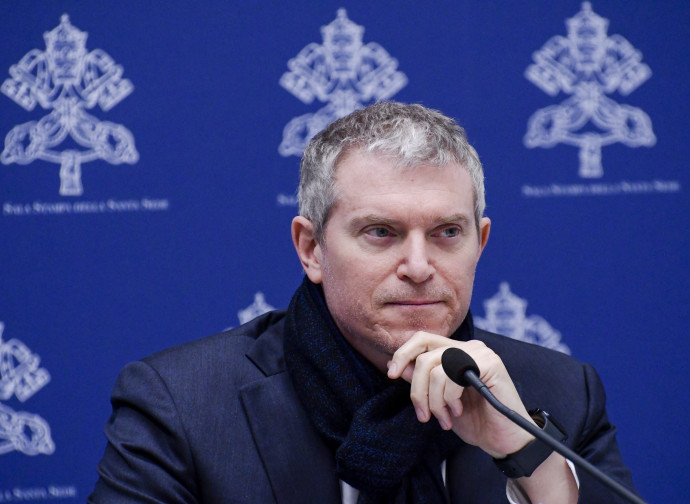A scandal over the Traditional Latin Mass, Vatican communications unable to respond
The Daily Compass writes to the director of the Press Office, Bruni. But the answers do not clarify whether, in addition to the official and favourable consultation, other consultations were held to justify the war on the Latin Mass produced by the motu proprio Traditionis custodes. In reality, it seems that it was the Congregation for Divine Worship and not the bishops consulted that buried the Traditional Latin Mass.

Last week, there was no end to talk about what we have dubbed the Vatican Watergate. Diane Montagna, author of the scoop that revealed how the outcome of the consultation on the application of Summorum Pontificum carried out in 2020 among diocesan bishops was different from what was implied in the opening words of Traditionis custodes, has published the Vatican protocol number of the original opinion of the Congregation for the Doctrine of the Faith.
It is the smoking gun that puts an end to the question of the authenticity of the previously published texts. An authenticity that the director of the Holy See Press Office, Matteo Bruni, responding irritably to a question from Hannah Brockhaus originally addressed to Monsignor Vittorio Francesco Viola, had said he could not “confirm”. The Vatican “spokesman” had also claimed that the material made public by Montagna was “presumably part of one of the documents on which the decision was based, and as such fuels a very partial and incomplete reconstruction of the decision-making process”.
Bruni, however, was unfortunate because during the press conference on 3 July, he was probably unaware that at the same time the publishing house Fede & Cultura was launching the pre-sale of the book ‘La liturgia non è uno spettacolo - Il Questionario ai vescovi sul rito antico: arma di distruzione di Messa?’ (The Liturgy is not a show - The Questionnaire to the bishops on the ancient rite: a weapon of destruction of the Mass?). The volume, written by Don Nicola Bux and Saverio Gaeta, announces that it will publish the overall judgement of the congregation with a complete collection of quotations from bishops who are opposed to touching the Summorum Pontificum. A ‘preview’ was provided to Montagna himself, who, a few days ago, in response to Bruni, was able to post online both the protocol number and other previously unpublished parts of those documents which, according to Bruni, would have fuelled a ‘very partial’ reconstruction.
Now that further documents have been released and we know that we can find the complete documentation in the book by Bux and Gaeta, the response given to Brockhaus on 3 July appears even more problematic. On that occasion, Bruni also said that ‘the consultation mentioned above was subsequently supplemented by other documentation, other confidential reports, including those resulting from further consultations received by the Congregation for the Doctrine of the Faith.’ However, we know that Francis, in Traditionis custodes, made no mention of any material other than the ‘wishes expressed by the episcopate’ and the ‘opinion of the Congregation for the Doctrine of the Faith.’ So what is this ‘other documentation’ brought up for the first time by Bruni in his response to the question about Montagna's initial revelations?
The New Daily Compass asked him directly. We acknowledge that Bruni responded to our email this time. Unfortunately, however, he did not provide any clarification on an element that was unknown until 3 July and revealed by him during the aforementioned conference. On the decision-making process regarding Traditionis custodes, the director replied that ‘as written in the motu proprio itself, the Congregation for the Doctrine of the Faith formulated an opinion on the matter and the wishes expressed by the episcopate were also taken into consideration, further broadening the elements on which to base the decision.’
This response, however, brings us back to square one: we know very well that Francis attributed a role in his decision to the opinion given by the former Holy Office on the basis of the results of the consultation conducted among the bishops. But it was Bruni himself who argued that these two factors were not exclusive in the decision-making process, because they were accompanied by the existence of the fruit of ‘further consultations.’ For this reason, we asked the director of the Press Office to give more details on the nature of these consultations: were they conducted among the diocesan bishops, like the previous one that had given a favourable response to Summorum Pontificum?
We also asked him to explain what necessity had led to these alleged ‘further consultations’ despite the fact that a complete consultation had already taken place and had also given rise to an opinion from the Congregation for the Doctrine of the Faith. Finally, we wanted to know if there was an explanation for the failure to mention this ‘other documentation’ in the text of Traditionis custodes and in the accompanying letter, which instead only mentioned the 2020 consultation and the opinion of the former Holy Office, which – as we now know – did not present a situation worthy of concern.
Unfortunately, our questions have remained unanswered. However, since Bruni attributed to Montagna's publication the possibility of fuelling ‘a very partial and incomplete reconstruction,’ it would perhaps have been appropriate for him to provide a complete and exhaustive one. Instead, the novelty of the ‘fruit of further consultations’ thrown in without further details could only raise new questions. In any case, we asked some diocesan bishops who had received the questionnaire from the Congregation for the Doctrine of the Faith and were told that they had not received any further consultation on the matter since 2020. It could therefore be inferred that if these further consultations did indeed take place, they concerned a partial and more incomplete sample than the previous one. So why should they have carried more weight in the decision-making process? Greater clarity is expected from those who speak on behalf of the Holy See.
Internal sources, in fact, confirm that the indication of the former Holy Office at the time, in agreement with the majority of the episcopate consulted, was unequivocal and in favour of maintaining Summorum Pontificum, but that Francis' decision was influenced above all by the will of the leaders of another dicastery, that for divine worship and the discipline of the sacraments.
The uproar caused by this Vatican Watergate must not in any way be seen as a form of pressure on Leo XIV to repeal Traditionis custodes, because the opportunity to repeal or at least drop the motu proprio of 2021 is independent of the revelation of these (serious) facts. It seems unlikely that the reigning Pope, a promoter of unity and a preacher of peace, would not want to untie this knot, the proportions and consequences of which he is well aware. Perhaps he will do so by softening the application of the restrictive measures that have been centralised in Rome by the dicastery for divine worship, with intentions opposite to those that might animate Prevost. Patience and intelligence are needed, qualities that the new Pope has in abundance.




